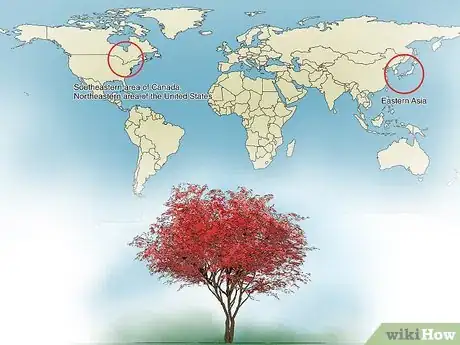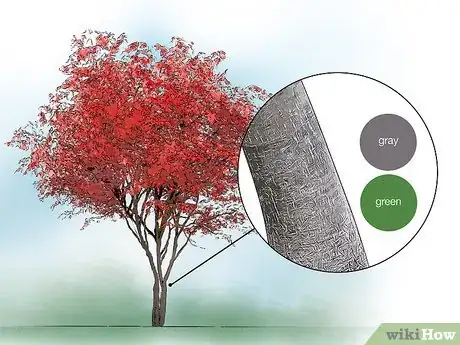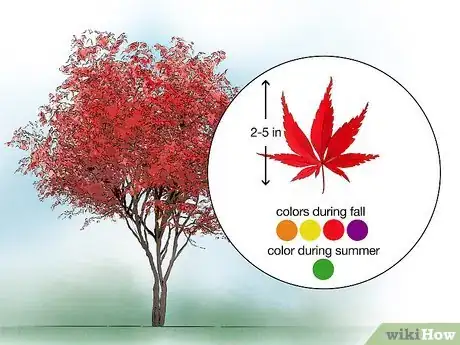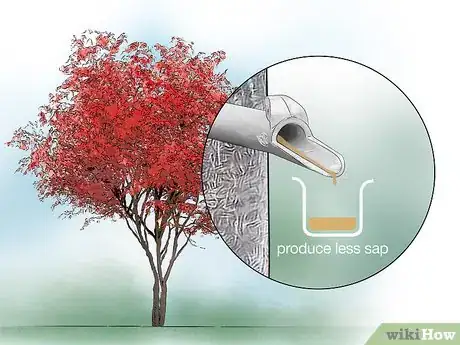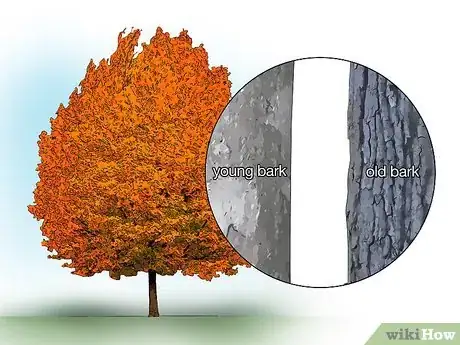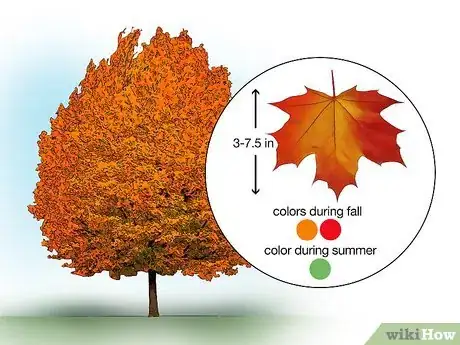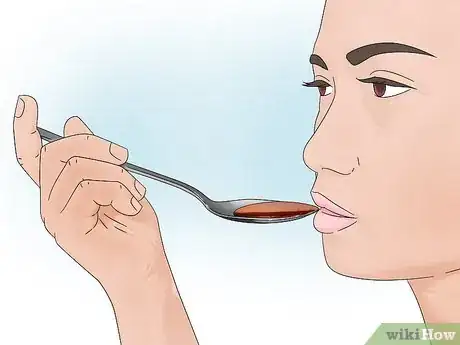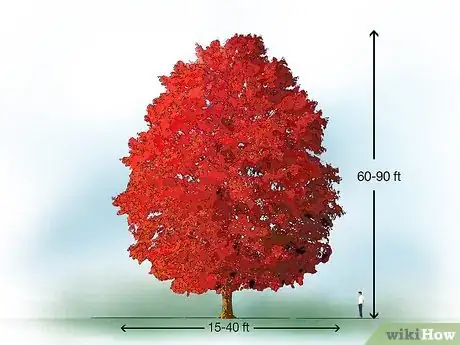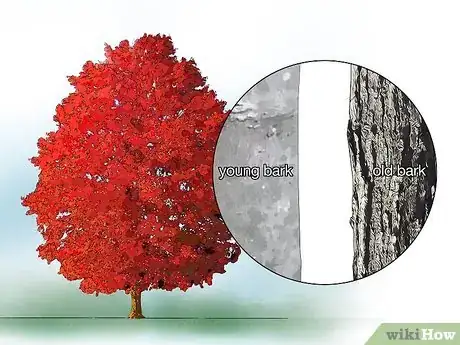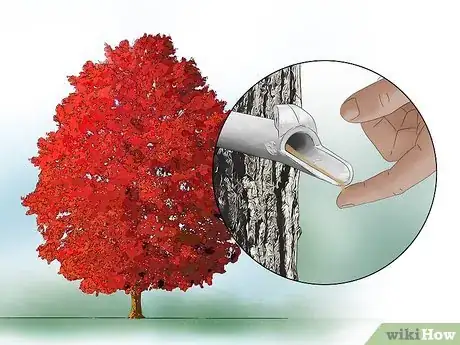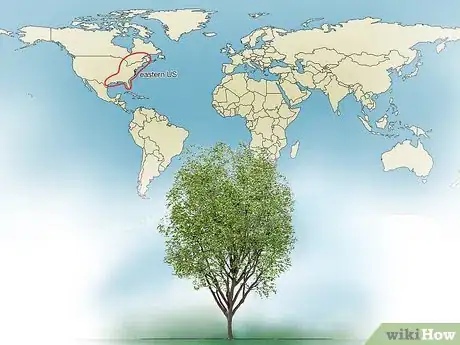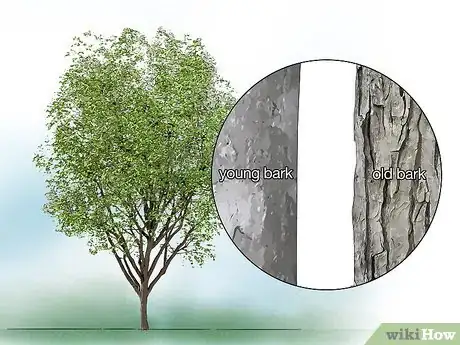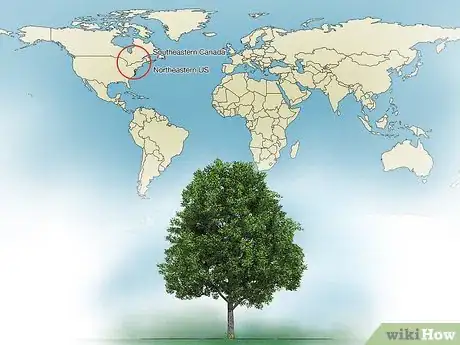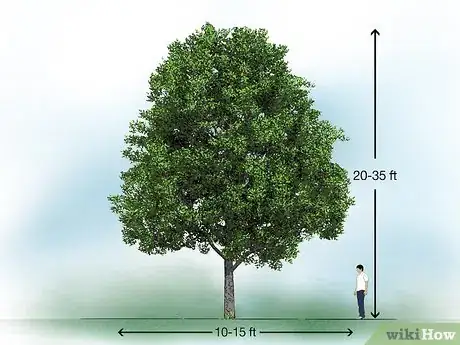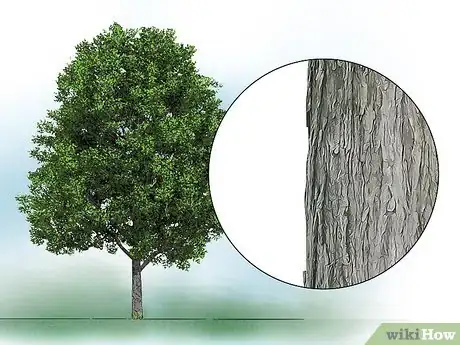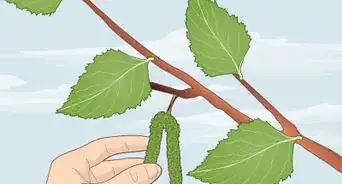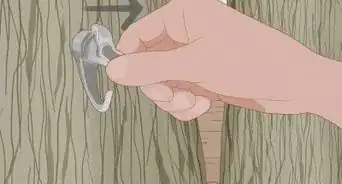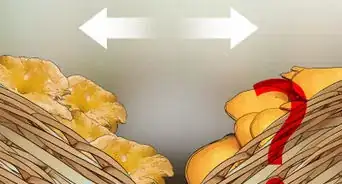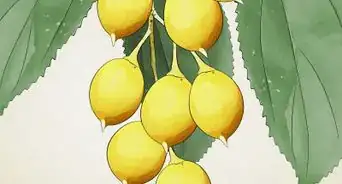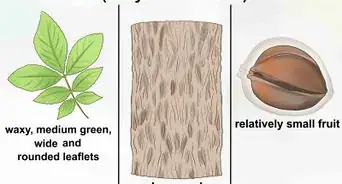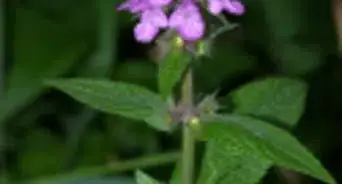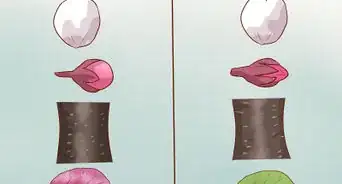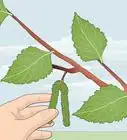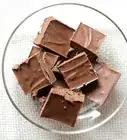This article was co-authored by Michael Simpson, PhD. Dr. Michael Simpson (Mike) is a Registered Professional Biologist in British Columbia, Canada. He has over 20 years of experience in ecology research and professional practice in Britain and North America, with an emphasis on plants and biological diversity. Mike also specializes in science communication and providing education and technical support for ecology projects. Mike received a BSc with honors in Ecology and an MA in Society, Science, and Nature from The University of Lancaster in England as well as a Ph.D. from the University of Alberta. He has worked in British, North American, and South American ecosystems, and with First Nations communities, non-profits, government, academia, and industry.
There are 35 references cited in this article, which can be found at the bottom of the page.
This article has been viewed 1,535 times.
Because there are more than 100 maple tree species in existence,[1] identifying all of them can be challenging. Additionally, they all have things in common, such as producing seeds that are winged and known as samaras. [2] Fortunately, this wikiHow will explain how you can identify some of the more common maple tree species that you might come across.
Steps
Japanese Maple
-
1Take note of the location and habitat of this tree. Japanese Maples originated in Eastern Asia, and can also be found in the Southeastern area of Canada, along with the Northeastern area of the United States.[3]
- They are usually found growing in areas that are partially shaded, though in northern areas without particularly hot temperatures during the summer, they may also be growing in areas that get full sun.[4]
-
2Figure out the tree’s size. Japanese Maples are known to be smaller trees, usually growing to be as tall as 30 feet (9.1 m), with a spread that can be as much as 20 feet (6.1 m), though both of these are dependent on what variety of Japanese Maple the tree is.[5]Advertisement
-
3Examine the bark. Japanese Maples should have smooth-feeling bark that is anywhere from a green to a gray color.[6]
-
4Look at the leaves. Japanese Maples should have leaves that are arranged in an opposite manner and shaped like hands. You should also notice that there are either 5 or 7 lobes on the leaves, as well as a length of anywhere from 2 to 5 inches (5.1 to 12.7 cm). During the summertime, the leaves are green, and in the fall, there are a variety of possible colors that the leaves can be, which range anywhere from an orange to yellow color, to a red to purple color.[7]
- You’ll start noticing the leaves on a Japanese Maple early during the springtime.[8]
-
5Avoid expecting a lot of sap. Japanese Maples are not known to produce large quantities of sap, and this sap doesn’t a noticeably great taste, so this tree probably wouldn’t be best if you’re looking to make maple syrup.[9]
Sugar Maple
-
1
-
2Check the size. Sugar maples are very large trees, growing to be between 65 and 80 feet (780 and 960 in).[12] They are also quite wide, which is crucial when tapping them. This is because larger trees are less likely to become infected or die. They also tend to have more sap because they are wider.
-
3Notice the bark. The Sugar maple’s bark is smooth and a light gray when they’re young, but darkens to a dark gray with age and obtains rough and vertical ridges when they are fully mature.[13] The bark also become flaky and papery with age.
-
4Notice the leaves. The Sugar maple’s leaves are often light green, between 3 and 7.75 inches (7.6 and 19.7 cm) long, look similar to the Norway maple’s leaves, and turn a bright red and orange in the fall.[14]
-
5Taste the sap. The sap of the Sugar maple is often, like the name might suggest, sweet and sugary. The sugary sap is often used for making maple syrup or making maple sugar.
Red Maple
-
1Notice the location. There are a lot of red maples throughout eastern North America. [15] Specifically, they can be found in east Canada, going southwards to Florida, and then westwards to eastern Texas. [16]
- They aren’t found often in forests. Instead, red maples are typically seen as understory.[17]
-
2
-
3Notice the bark. You should notice smooth-feeling bark that is light ash-gray (close to silver) in color on a red maple that is younger. As the age of the tree increases, the bark gets darker in color, and you should also notice cracks, which are vertical. [20]
- Keep in mind, though, that the bark isn’t very helpful for identifying a red maple since as the tree is maturing, the bark undergoes changes. [21]
-
4Examine the leaves. Red maples have opposite leaves that are simple, with a length of anywhere from 2 to 5 inches (5.1 to 12.7 cm). They have either three or five lobes, with bases in the shape of a V and a longer lobe in the middle compared to the ones on the sides. The leaves also have toothed margins,[22] and while the top of the leaves should be green, the bottoms are of a whiter color, and they may be hairy or glaucous. [23] In the fall, the leaves can be anywhere from dirty yellow to orange in color, or even a red color, transitioning from a yellow-orange color, if the tree is growing in soil which is a little acidic and drained well. [24]
-
5Try the sap. Red maple sap doesn’t usually have as much sugar as the sap that comes from a sugar maple. This means that if you’re making maple syrup using the sap from a red maple, you’ll likely need to boil it more.[25]
Silver Maple
-
1
-
2Check the size of the tree. Silver maples can grow to be as tall as somewhere between 50 to 80 feet (15 to 24 m), with a spread of somewhere between 35 to 50 feet (11 to 15 m).[29]
-
3Notice the bark. Silver maples have thin bark without thorns that is gray-colored and breaks off quite easily. While the bark has a smooth-feeling texture when the tree is younger, you should notice a more flaky texture once the tree ages. [30]
- Because of the flaky texture, if you have a silver maple, you’ll need to make sure that you remove any of the bark flakes that end up under the tree.[31]
-
4Examine the leaves. Silver maples have simple leaves that are arranged oppositely with five lobes. Their length is approximately 3 to 6 inches (7.6 to 15.2 cm), and they are green-colored during the summertime, but yellow-green in color during autumn. Additionally, the leaves have an underside with a color similar to silver.[32]
-
5Expect sap that isn’t sugary. Silver maples have less sugar in their sap than other maple trees, and the sap is also known to be watery and thin. Additionally, silver maples usually get leaf buds prior to having warm enough temperatures for the sap to flow well, and when this happens, the sap also doesn’t taste very good. Therefore, this isn’t the best tree to tap if you’d like to make maple syrup.[33]
Mountain Maple
-
1
-
2
-
3Examine the bark on the tree. Mountain maples usually have thin bark that has a color which is similar to light brown.[38]
-
4View the tree’s leaves. Mountain maples have simple leaves which are arranged in an opposite manner. Their blades can be as long as 5.5 inches (14 cm), with almost the same width. The base of the leaves should be in the shape of hearts, and there should be anywhere from 3 to 5 lobes, which are palmate.[39]
-
5Tap the tree for sap later during the wintertime. Mountain maples can be tapped for sap (which can then be used to make maple syrup), but it is best to harvest the sap later during the wintertime, specifically during a day following a frost that is sunny and warm, because you’ll get good flow.[40]
- You’ll be able to produce more sap from this tree if it’s in a climate that is continental.[41]
References
- ↑ https://garden.lovetoknow.com/wiki/Types_of_Maple_Trees
- ↑ https://www.canr.msu.edu/news/maple_seeds_dropping_in_soon
- ↑ https://naturewalk.yale.edu/trees/aceraceae/acer-palmatum/japanese-maple-42
- ↑ https://gardenerspath.com/plants/landscape-trees/japanese-maple/
- ↑ https://gardenerspath.com/plants/landscape-trees/japanese-maple/
- ↑ https://bernheim.org/learn/trees-plants/bernheim-select-urban-trees/japanese-maple/
- ↑ https://bernheim.org/learn/trees-plants/bernheim-select-urban-trees/japanese-maple/
- ↑ https://bernheim.org/learn/trees-plants/bernheim-select-urban-trees/japanese-maple/
- ↑ https://howtodiscuss.com/t/can-you-get-maple-syrup-from-a-japanese-maple-tree/83453
- ↑ https://www.srs.fs.usda.gov/pubs/misc/ag_654/volume_2/acer/saccharum.htm
- ↑ https://www.srs.fs.usda.gov/pubs/misc/ag_654/volume_2/acer/saccharum.htm
- ↑ https://www.arborday.org/trees/treeguide/treedetail.cfm?itemID=870
- ↑ https://canadiantreetours.org/species-pages/Sugar_maple.html#tree_details
- ↑ https://canadiantreetours.org/species-pages/Sugar_maple.html#leaves_details
- ↑ https://www.srs.fs.usda.gov/pubs/misc/ag_654/volume_2/acer/rubrum.htm
- ↑ https://www.wildflower.org/plants/result.php?id_plant=acru
- ↑ https://www.wildflower.org/plants/result.php?id_plant=acru
- ↑ https://www.nwf.org/Educational-Resources/Wildlife-Guide/Plants-and-Fungi/Red-Maple
- ↑ https://www.treehugger.com/essential-red-maple-information-1343373
- ↑ https://wildadirondacks.org/trees-of-the-adirondacks-red-maple-acer-rubrum.html
- ↑ https://wildadirondacks.org/trees-of-the-adirondacks-red-maple-acer-rubrum.html
- ↑ https://mdc.mo.gov/discover-nature/field-guide/red-maple
- ↑ https://dendro.cnre.vt.edu/dendrology/syllabus/factsheet.cfm?ID=1
- ↑ https://www.thespruce.com/best-maple-trees-for-fall-color-4767398
- ↑ https://acadianmaple.com/blogs/maple-syrup-blog/does-maple-syrup-from-red-maple-taste-different
- ↑ https://www.nrs.fs.fed.us/fmg/nfmg/bl_hardwood/eco/spechar/maple_silv.html
- ↑ https://www.nrs.fs.fed.us/fmg/nfmg/bl_hardwood/img/eco/saccharinum_range%20map.jpg
- ↑ https://garden.lovetoknow.com/wiki/Silver_Maple_Tree
- ↑ https://integritytreepros.com/the-pros-and-cons-of-having-a-silver-maple-tree-in-your-yard/
- ↑ https://sites.redlands.edu/trees/species-accounts/silvermaple/
- ↑ https://sites.redlands.edu/trees/species-accounts/silvermaple/
- ↑ https://mortonarb.org/plant-and-protect/trees-and-plants/silver-maple/#!
- ↑ https://homeguides.sfgate.com/silver-maple-give-sap-syrup-81005.html
- ↑ https://www.fs.fed.us/database/feis/plants/shrub/acespi/all.html
- ↑ https://wildadirondacks.org/trees-of-the-adirondacks-mountain-maple-acer-spicatum.html
- ↑ https://www.wildflower.org/plants/result.php?id_plant=acsp2
- ↑ https://www.greentecnursery.com/mountain-maple/
- ↑ https://www.carolinanature.com/trees/acsp.html
- ↑ https://www.minnesotawildflowers.info/tree/mountain-maple
- ↑ https://pfaf.org/user/Plant.aspx?LatinName=Acer+spicatum
- ↑ https://pfaf.org/user/Plant.aspx?LatinName=Acer+spicatum
- ↑ https://www.maplefloor.org/TechnicalInfo/Position-Statements/Hard-Maple-vs-Soft-Maple.aspx
